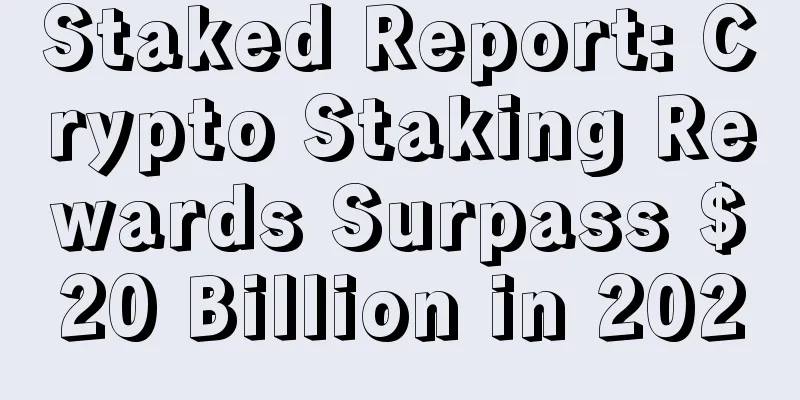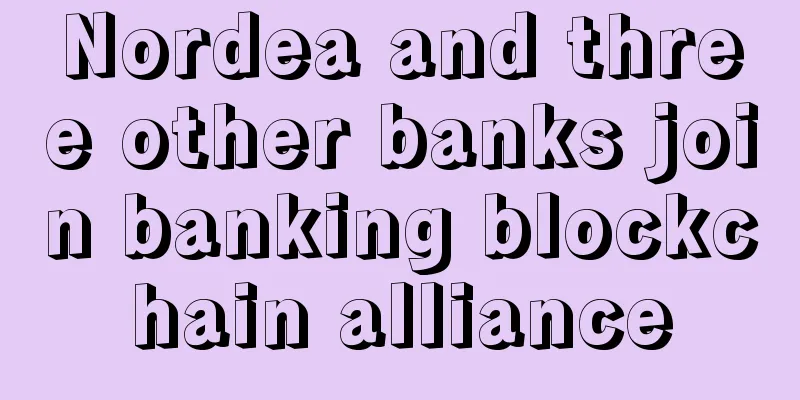Staked Report: Crypto Staking Rewards Surpass $20 Billion in 2020

|
Key points:
According to Decrypt on January 20, over the past decade, mining of cryptocurrencies such as Bitcoin has been the cornerstone of the digital currency industry. However, Staked, a blockchain staking infrastructure company, believes that staking may have a significant impact on the industry in 2021. In fact, 2020 has been a pretty big year. According to Staked’s “2021 Q1 Staking Status Report”, more than $20 billion in staking rewards were generated throughout the year. Staked claims that proof-of-stake blockchains now account for 25 of the 100 most valuable crypto networks. What is Proof of Stake? How is it different from Bitcoin? Here’s a quick introduction: Bitcoin and most early cryptocurrencies use hardware mining, or proof of work, to secure the blockchain. This involves many high-end computer processors solving complex math problems. It started small, but Bitcoin proof-of-work mining quickly grew in power demand and now rivals the energy use of some small countries. In contrast, proof of stake maintains security by having some users stake the relevant tokens using low-powered hardware nodes. If the staked nodes run for a long time or send bad transactions, the staked tokens may be at risk of being confiscated. On the contrary, if the validator behaves honestly and maintains the security of the network operation, then the staked tokens will bring interest and rewards in return. As proof-of-stake networks gain popularity, their supporters (and investors) believe that proof-of-stake blockchains can provide security at scale just as well as networks that use hardware mining. According to the Staked report, with the launch of Ethereum 2.0 in December 2020 and the rise of stake token chains such as Polkadot and Solana, the market value of proof-of-stake blockchain has exceeded US$175 billion and will continue to grow in 2021. Tim Ogilvie, CEO of Staked, said: Every proof-of-stake blockchain project needs to ensure that participants are paid a sufficiently generous return to tie up their assets and take on significant risk. Otherwise, the project’s entire security model is at risk. I expect staking returns to decline over time as people’s risk tolerance and risk appetite increase. But I also think the most successful projects will actively consider ‘monetary policy’ to ensure the right balance between security and inflation.” Staked found that the average weighted annual yield on various proof-of-stake blockchains reached 11.2%. According to Investopedia data, the average dividend yield of the S&P 500 index is less than 3%. The former has a significantly higher return rate. In addition, Staked found that in Ethereum 2.0, staked ether accounts for nearly 60% of the total market value of the entire staked network. In addition to the staking rewards launched in December, the Ethereum 2.0 upgrade is expected to bring lower fees and higher transaction volume to the Ethereum network. Despite the excitement surrounding the Eth2 upgrade, only 2% of all Ether is staked so far. This is a small amount compared to other blockchains that have made headlines in 2020. Solana and Polkadot have over 30% and 65% of their tokens staked, respectively. The next phase of the Ethereum 2.0 upgrade is tentatively scheduled for 2021, which will allow users to withdraw their tokens when they stake them. This could be a boon for the growth of the staking market and could make 2021 the true year of proof-of-stake security. This article is translated with permission from decrypt.co. |
Recommend
How to tell if a stingy person is stingy
In life, we always meet some selfish and stingy p...
North Korean hackers steal 100 million won worth of Bitcoin every month, South Korean cybersecurity firm confirms
Golden Finance News - Bitcoin has made great prog...
Bitcoin mining cost ranking: Oceania is highest and Africa is lowest
Recently, New Jersey power company Elite Fixtures...
Royal Bank of Canada explores blockchain loyalty program
During a roundtable today, Royal Bank of Canada (...
The world's first Bitcoin-related mutual fund is launched
U.S. asset manager ProFunds on Wednesday launched...
Fortune from the forehead
In physiognomy, the forehead is the location of t...
People with a hollow in the philtrum have good eloquence
Some people have a strange philtrum, with a hollo...
How to read men's eyebrows
Eyebrows represent a person's fortune; so, ho...
Detailed Explanation of the Sixty-Four Hexagrams_Hexagram 23: Mountain Peeling
In ancient times, Zhouyi was the academic discipl...
Is MicroStrategy founder's view on Bitcoin right or wrong?
Despite Bitcoin’s volatility and regulatory press...
Lip shape can tell a person's wealth and status
Lip shape can tell a person's wealth and stat...
"Let blockchain bloom in California" - California Governor signs blockchain executive order today
On Wednesday, California Governor Gavin Newsom si...
Analysis of the face of a woman with dragon and phoenix eyes
The word "phoenix eyes" often appears i...
Judging from a person's face whether he is a filial son
Filial piety is the first of all virtues, and lus...
How is the fortune of women with long dragon eyebrows?
Although most people think that girls will get ma...









